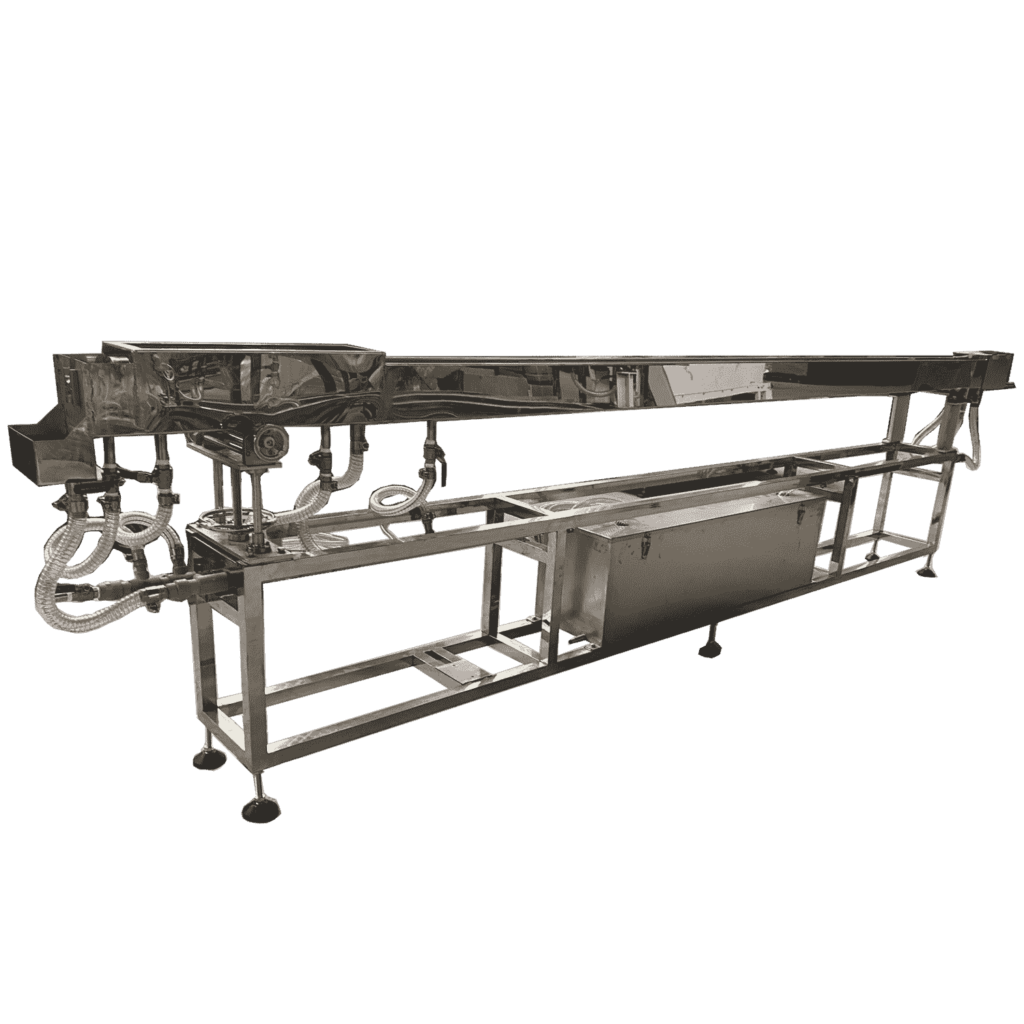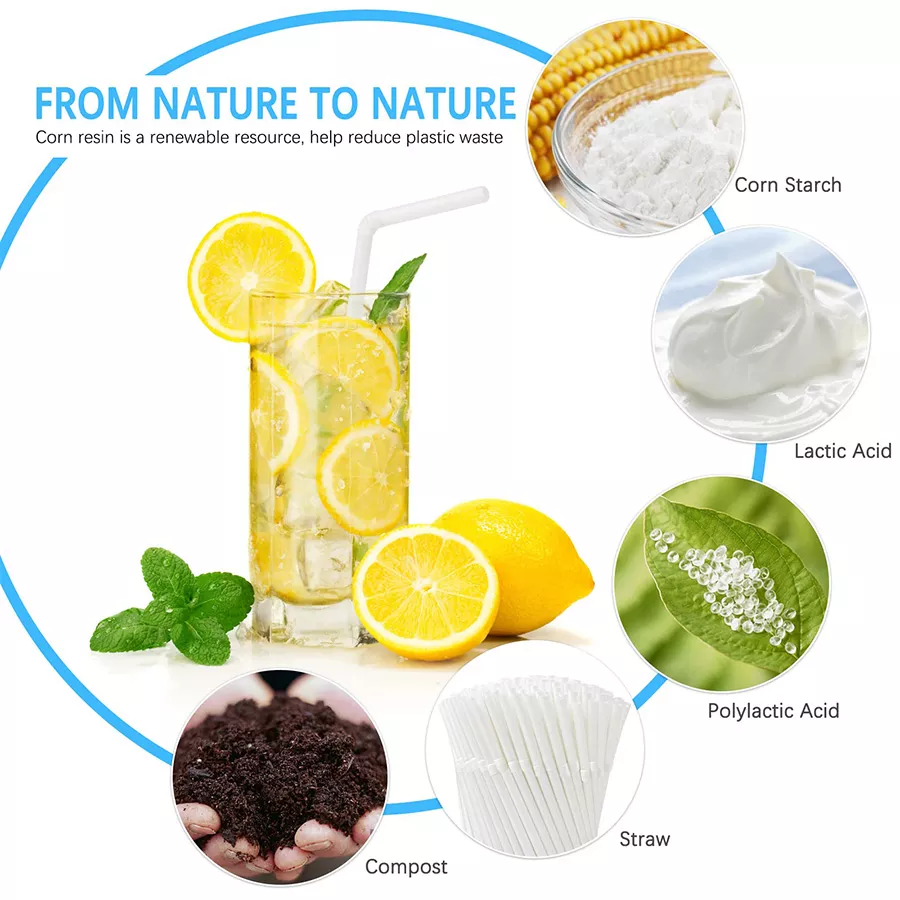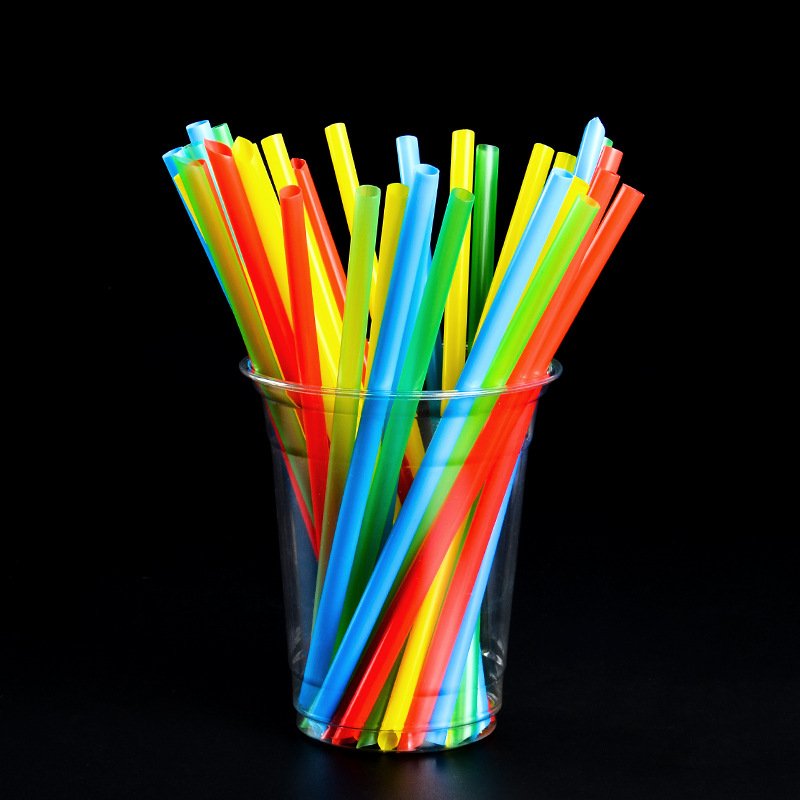Phan stowing ማሽን
የባዮዲተርስ ተጓዳኞችን ለማምረት ማሽን እየፈለጉ ነው? ሲኪ ጥራት ያለው ማረጋገጫ, አስተማማኝነት እና ግኝት እሴት ይሰጠዎታል.
የኬዙሂ ማሽኖች ፕሮጀክትዎ ስኬታማ እንዲሆን ለማድረግ እጅግ በጣም ጥሩ የምርት መስመር ሊሰጥዎ ይችላል.
ምርቶቹ ኬዝሂ ይሰጠዎታል
ቀርዓሻ የተለየ ገለባ የማሸጊያ ማሽን, ገለባ ማሸጊያ ማሽን, ገለባ ማሸጊያ ማሽን ማሽን. ወደ ጥራቱ ያለን ውሳኔ ግሩም ገለባ የምርት ፍጆቶች በአለም አቀፍ ደረጃ ላይ እንደ አንድ አቅራቢ ሆነን

PLA ገለባ ማምረቻ ማሽን
- ዋና ጩኸት ዲያሜትሮ 6 6 ሚሜ / 50 ሚሜ
- ዴልታ ኢንተርናሽናል, WN ሞተር,
- ከፍተኛ ውፅዓት 100 ኪ.ግ / ሰዓት
- ለፒ.ፒ. / ፕላን ፓውጋር ተስማሚ
- ራስ-ሰር ቁሳቁስ መጫኛ / ማድረቂያ

PLA ገለባ ማምረቻ ማሽን
- Servo ሞተር, ቀጥተኛ ድራይቭ, ዴልታ ኢንተርናሽናል,
- ዋና ጩኸት ዲያሜትሮ 6 6 ሚሜ / 50 ሚሜ
- ከፍተኛ ውፅዓት 100 ኪ.ግ / ሰዓት
- ለፒ.ፒ. / ፕላን ፓውጋር ተስማሚ
- ራስ-ሰር ቁሳቁስ መጫኛ / ማድረቂያ
አጠቃላይ ማመልከቻዎች ለምርት መስመር
መስመሩ የመጠጥ ጊዜን ብቻ ሳይሆን የቡና ቀዳዳዎችን, የቡድኖፕ ዱካዎችን, የቡድኖፕ ዱካዎችን, የሎጋሊ ዱባዎችን, የሻንጉሊት ቱቦዎችን እና ሌሎች ትናንሽ መገለጫዎችን, ለምርትዎ ተጨማሪ አማራጮችን በመቀየር ሌሎች ትናንሽ መገለጫዎች.
የ ማሽን
የፕላስ አውራ ፍሰት ማሽን ማሽን የባዮዲካል አሲዶች ውሰድ ከፖሊላቲክ አሲድ (ፕላን), እንደ የበቆሎ ፓርኪ, ስካራ ወይም ካሳቫ የመሰለ ከሚያሳድሩት ዘላቂ እና የኢኮ ተስማሚ ነው. ባህላዊ የፕላስቲክ ጨረሮችን ለመተካት የተቀየሰ, እነዚህ ማሽኖች የአካባቢ ብክለትን ለመቀነስ ተግባራዊ እርምጃ ይሰጣሉ.
ዋና ዋና አካላትየሚያያዙት ገጾች
- ጠለፋየሚያያዙት ገጾች መልዕክት.
- የውሃ ማቀዝቀዝ: የእነሱ ቅርፅን ጠብቀን ለማረጋገጥ በፍጥነት የተዘበራረቁ ንባቶችን በፍጥነት ያደናቅፋል.
- ማሽን ማሽንየሚያያዙት ገጾች መልዕክት.
- ማሽን: በተገለፀው መሠረት ተመሳሳይነት ያላቸውን ውዳሴዎች በትክክል ይቁረጡ.
- L ሰገፈ: - ገለባውን የበለጠ በቀላሉ ይሰብስቡ, ኦፕሬተር ገለባውን ወደ ቀጣዩ ጣቢያ በፍጥነት ሊያገኝ ይችላል.
ሁለገብ እና ተጨማሪ መሣሪያዎች
- የቁስ ተለዋዋጭነት: - ማሽኑ እንደ PP (ፖሊፕፕሊሌኔኛ ያሉ ሌሎች የባዮዲተሮች (ፖሊ poly ርሊን) እና የፋይ / ክሊፕሽን / ስፖንሰር የመሰሉ ሌሎች የባዮዲድ ቁሳቁሶችን ማቀናበር ይችላል.
- የተሟላ የምርት መስመር: - ብዙውን ጊዜ እንደ ገለባ ማሸጊያ ማሽኖች, የማሸጊያ ማሽኖች, እና የካርቶን ቦክስ ቦክስዎች ማሽኖች ሊያካትት ከሚችል ተጨማሪ የምርት መስመር ውስጥ ተቀላቅሏል.




የ ጠለፋ
Tubing የተጠናቀቀበት የምርት መስመር በጣም አስፈላጊው ክፍል
የሙቀት ቁጥጥር
ለከፍተኛ ቧንቧ ቧንቧዎች ለማምረት ፈጣን እና ለስላሳ የማሞቂያ የማሞቂያ ማሞቂያ አሊኒየም ማሞቂያ ውሰድ, እናም በተሰነዘረው ቁሳቁስ የሁለተኛ ደረጃ ጉዳቶች አያስከትሉም.
ዋና ጩኸት
የባዮፕላቲክ ቁሳቁስ ባህሪን ለማሟላት ልዩ የተቀየሰ 65 ሚሜ / 50 ሚሜ ጩኸት.
L / d: - 1
የፕላንት እና የ PP ቁሳቁሶችን ማምረት ያሟላል.
ማቀዝቀዝ
ስድስቱ የአድናቂዎች ማቀዝቀዝ
የሞተር ሞተር
11KW / 30 ኪ.ግ የሶስት-ደረጃ ተመሳሳይ ሞተር, ውፅዓት ቶክ ትላልቅ ነው, ምርቱ የበለጠ የተረጋጋ ነው, ምርቱ ብስለት እና ለማቆየት ቀላል ነው.
Servo ሞተር አማራጭ
ማርሽ መቀነስ
ለፕላስቲክ ጊልዩድ, የጉማሆ የንግድ ምልክት, አስተማማኝ ጥራት ልዩ የችግር ጊዜ አንጀት,
ሬሾ 12.5
ኢንተርናሽናል
ዴልታ ኢንተርናሽናል, ታዋቂው የምርት ስም, የተረጋጋ እና አስተማማኝ አፈፃፀም, በተገቢው ኢንዱስትሪ ውስጥ በጣም የታወቀ ማቆሚያ
የውሃ ማቀዝቀዝ ባህሪዎች
በሁለተኛው ክፍል ውስጥ የተዘበራረቀ ቧንቧው እዚህ የሚቀዘቅዝ እና በተሻለ መልክ ይቀዘቅዛል.


ትራክ & ማሽን ባህሪዎች
በሦስተኛው ክፍል ውስጥ የተወሰደው ቧንቧው ወደ ትናንሽ ቁርጥራጮች ይጎትታል.
ያስፈልጋል ረዳት መሣሪያዎች
እነዚህ ሁለት ማሽኖች ለምርት መስመር ለሚሮጡ አስፈላጊ ናቸው.

የኢንዱስትሪ Chiller
የ 5hp የኢንዱስትሪ ኩባንያዎች ለምርት መስመሩ አስፈላጊ ነው, በአየር ላይ የተዘበራረቀ ሽቦ ወይም የውሃ-ቀዝቅዞ ሽጉጥ ፍላጎቶችዎ በሚያስፈልጉዎት ነገር መምረጥ ይችላሉ. የፍርድ ሂደት በሰዓት ከ 3 ኪዩቢክ ሜትር በላይ

የአየር ማቃጠል
A 7.5 ኪ (10 ኪ.ግ (10-W) የአየር ማቃለያ ለአንድ ነጠላ የምርት መስመር ያስፈልጋል, የፒስቶል አየር ማጭበርበሪያ ወይም በሚያስፈልጉዎት ፍላጎቶች ላይ የአየር ማጭበርበሮችን መምረጥ ይችላሉ.
እንዴት ነው ይሰራል
ከዚህ ቪዲዮ በኋላ እንዴት እንደሚሰራ ይወቁ,

ለምን የፕላስ ገለባ
ስለ VARAR DAL የበለጠ ይወቁ
የፕላስ ገለባ ምንድን ነው?
የባትሪ ባዮዲተርስ የመጡ ወረራዎች የሚሠሩት እንደ የበቆሎ ፓርታ ወይም የሸንኮራ አገዳ ከሚያዳከሉ ሀብቶች የተገኙ የባዮፕላቲክ አሲድ (PAP) የተሠሩ ናቸው. ከፔይሮሊየም ከተደረጉት ባህላዊ የፕላስቲክ ነጠብጣቦች በተቃራኒ የፕላድ ፊደሎች በኢንዱስትሪ አቀናባሪ ሁኔታዎች ስር የተነደፉ እንዲሆኑ የተቀየሱ ናቸው.


ፖሊቲክ አሲድ (ፕላ) የባዮዲድ እና የባዮኮኮኮኮኮኮኮሌት ቴርሞስቲክ ፖሊስ እንደ በቆሎ ፋብሪካ ወይም የሸንኮራ አገዳ ከሚገኝ ታዳሾች ሀብቶች የተገኘ ነው. እሱ የሚመረተው በኬሚካዊ ቀመር C3H4O2 የአንዲራሚክ ፖሊስተር በመመስረት ነው. ፕላስ ሶስት ዋና ዋና ቤተሰቦችን - ፒ.ሲ.ኤል, ፒላላ እና ፓድላ-ልዩ የሞለላ መዋቅሮች ያመለክታሉ. ይህ ፖሊመር ከፍተኛ ጥንካሬው ገና ከፍተኛ ጥንካሬ ያለው ሲሆን የ 52 ሜ / ሴ.ሜ. እና 165 ዲግሪ ሴንቲግሬድ የ 165 ° ሴ የመለዋወጥ ነጥብ ነው. ምንም እንኳን የባዮዲካል ዓመፅ ቢኖርም, ፕራዴድ ዲግሪ ሴንቲ ግሬድ እና 90% እርካታ ያላቸው የተለያዩ እርጥበቶች ሙሉ በሙሉ እንዲበስሉ ይፈልጋል. የፕላዎች የተለመዱ ትግበራዎች የ 3 ዲ ማተሚያዎች, የህክምና መሳሪያዎች እና ግተቶች, የምግብ ማሸጊያዎች እና ጨርቃጨርቅ ያካትታሉ. የእሱ ኢኮ- ተስማሚ ንብረቶች ከባህላዊ ፕላስቲኮች ጋር ሲነፃፀር ዝቅተኛ የኃይል ማነስ ፍላጎቶች, እና አጠቃላይ የምግብ ደህንነት በተለያዩ ኢንዱስትሪዎች በተለይም በአድራሻ ማምረቻ መስኮች ሁሉ ታዋቂ ምርጫ ነው.
የፕላቶች ጠላፊዎች ጥቅሞች
1. የባዮዲድ በሽታ በቀኝ የኢንዱስትሪ የተዋሃዱ ሁኔታዎች ስር የፕላዎች እፋቶች በባዮዲድ የተለመዱ ናቸው. በአካባቢያዊ ማይክሮባቦች ውስጥ ወደ ውሃ እና በካርቦን ዳይኦክሳይድ, በተለይም በተገቢው ጨዋታ አካባቢዎች ውስጥ በ 90 ቀናት ውስጥ.
2. ተክል-ተኮር ቁሳቁስ: እንደ የበቆሎ ገበያዎች, እንደ የበቆሎ እርባታ የተሰራ, የፕላዝስ ፊደላት ከተነካው ፕላስቲኮች ከተሰጡት ከፋዮች እንደሚበልጥ ዘላቂ ምርጫ ሆኖ ያገለግላሉ.
3. የምግብ ደህንነት የፕላስ ፍንዳታ የምግብ ደረጃዎችን ከአገልግሎት ጋር የሚገናኙ ሲሆን ከሞቅ እና ከቀዝቃዛ መጠጦች ጋር ለመጠቀም ደህና ናቸው.
4. የተለያዩ በተለያዩ መጠኖች, ቅርጾች እና ቀለሞች, የፕላዎች እጢዎች የተለያዩ ፍላጎቶችን እና ምርጫዎችን ሊያሟሉ ይችላሉ.
5. የዋጋ ቅናሽ የፕላዝስ እስራቶች ዋጋ ባህላዊ የፕላስቲክ ጦርዎችን እና ከሌላ የወረቀት አውታዎች የበለጠ ኢኮኖሚያዊ የሚመስሉ 2 ሳንቲሞች ናቸው.
6. የላቀ ዘዴዎች እንደ ስቴሪዮ የተወሳሰበ ፕላ (ኤስ.ኤ.ፒ.ፒ.
7. እንደገና ጥቅም ላይ መዋል: - እንደ ኤስ.ኤስ.ኤስ. ቴ.ኤ.
8. የአካባቢ ጥበቃ ጥቅሞች የመሳሪያዎች ፈሳሽ በመፍሰስ እና ከፕላስቲክ መንደሮች ይልቅ በፍጥነት እንዲፈርስ ለዱር እንስሳት የበለጠ ደህና ይሆናሉ.
መሰረታዊ እውቀት ስለ የፕላስቲክ ጠፍጣፋ ማሽን
የመሳሪያውን መሰረታዊ ግንዛቤ እንዲያገኙ ለማገዝ አጭር መግለጫዎች አጭር መግለጫ
የርዕስ ማውጫ
የፕላስቲክ ጠፍጣፋ ማሽን ምንድነው?
ፕላስቲክ ፕላስቲክ የጥሬ ፕላስቲክ, በተለይም በፔሌል ቅፅ ውስጥ የተቀመጠ እና በተከታታይ መገለጫ ውስጥ እንደሚወጣ እና እንዲቀለበስ የሚረዳ ከፍተኛ መጠን ያለው የማምረቻ ዘዴ ነው. የሂደቱ ጅረት ጅቡ በቆሻሻው መጫኛ ውስጥ ሲጫን እና ወደ በርሜሉ ወደ ታች በሚንቀሳቀስበት ጊዜ ወደ በርሜል የሚዘልቅበት ቦታ. ይህንን ተከትሎ መከተላችን ቀለጠው የቃላት አሠራሩ በተፈለገው ቅርፅ በሚቀርበው ቅርፅ በሚተገበርበት ሞት ይሞላል. እንዲያንጸባርቅ እና የሚያጠናክር, ከፓይፕስ እና ከፕላስቲክ የፕላስቲክ ማጫዎቻ የመነጨው የመጨረሻ ምርቶች የመጨረሻ ዓይነት ነው. ይህ ዘዴ በተለያዩ ኢንዱስትሪዎች ውስጥ ለተለያዩ ኢንዱስትሪዎች, ትልልቅ መጠኖችን ለማምረት ለተለያዩ ኢንዱስትሪዎች, እና ውድነት ባለው የተለያዩ ኢንዱስትሪዎች ውስጥ ከፍተኛ ዋጋ ያለው ነው.
የፕላስቲክ አፀያፊ መርህ
በፕላስቲክ ፕላስቲክ ውስጥ የመጥፋት ሚና
ጠጪዎች በዋናነት የተሽከረከረው በርሜል በተሸፈነው ጩኸት የተሸጎጠ ጭልፊትን የፕላስቲክ ፕላስቲክ ሂደት ውስጥ እንደ ዋና አካል ሆነው ያገለግላሉ. ሂደቱ የሚጀምረው ጥሬ የፕላስቲክ ቁሳቁሶችን በመግቢያ, በተለይም በፔሌት ቅፅ ውስጥ ወደ ፔፕተር በኩል ወደ ጩኸት. ጩኸቱ በሚሽከረከርበት ጊዜ, ጉልህ ሙቀትንና ግፊት ያጋጠሙበት ወደ በርሜል ወደ በርሜል ያሽከረክራል, በእይታ ፈሳሽ ውስጥ እንዲቀልጡ ያደርጋቸዋል. ይህ ፈሳሽ ፕላስቲክ ከሽነታው ከሚወጣው መገለጫ ውስጥ ከተገለፀው መገለጫ ውስጥ በፕላስቲክ ውስጥ ለመቅረጽ በመሞቱ በኩል ይደረጋል. የፕላስቲክ ምርት አስቀድሞ አስቀድሞ በተወሰኑ ርዝመት ውስጥ እንደተዘረጋ በመቀዘቀዙ እና የተጠናከረ ነው. ይህ ዘዴ በተለያዩ የኢንዱስትሪ ትግበራዎች ውስጥ ወሳኝ ሚና በመጫወት ረገድ ይህ ዘዴ የተከታታይ የፕላስቲክ ርዝመቶችን ለማምረት ወሳኝ ነው.

የፕላስቲክ ጠፍጣፋ ማሽን አካላት
የመደበኛ የፕላስቲክ ጠፍጣፋ ማሽን በርካታ ቁልፍ አካሎች ያቀፈ ነው, እያንዳንዳቸው በተጫነበት ሂደት ውስጥ ወሳኝ ሚና ይጫወታሉ-
1. ሆፕ per ር የጥሬ የፕላስቲክ ቁሳቁስ, በአጠቃላይ በፔሌል ቅፅ ውስጥ የጥሬማ የፕላስቲክ ቁሳቁስ. መከለያው ትምህርቱን ወደ አጥቂው በርሜል ውስጥ ይሰላል.
2. በርሜል-ይህ አካል ከቁጥቋጦው ጩኸት ጋር ይጣጣማል እና ፕላስቲክን ለማቅለጥ ከሞታዎች ጋር ተጣብቋል. የተገነባው ከፍተኛ ጫናዎችን እና የሙቀት መጠንን ለመቋቋም ነው.
3. የፕሪኪዩተር ጩኸት-የፕላስቲክ እንክብሎችን ከመንጣቱ ወደ በርሜል ወደ በርሜል ያራግፋል. መሽከርከር እንክብሎችን ብቻ የሚንቀሳቀሱ ብቻ ሳይሆን በመፍጠር እነሱን ለማቅለል የሚያስፈልገውን ሙቀቱ ያወጣል.
4. ማሞቂያዎች: - በርሜሉ ላይ የተቀመጠው እነዚህ ንጥረ ነገሮች ፕላስቲክን ለመቅመስ እና ለተሳካ ጭልቂው አስፈላጊውን የሙቀት መጠን እንዲቆዩ ይረዳል.
5. መሞቱ: - ይህ በብጁ የተሰራ የተተነቀለ የቃለ ቀፎ ፕላስቲክ ቅርፅ. እሱ በተፈለገው ምርት ከሚፈለገው ፕሮፋይል ጋር እንዲዛመድ የተስተካከለ ነው.
6. የማቀዝቀዝ ስርዓት: ድህረ-ጠፍጣፋነት, ቅርፅ ያለው ፕላስቲክ ቀዝቅዞ እና የተጠናከረ መሆን አለበት. ይህ ስርዓት እንደ አድናቂዎች, የውሃ የመታጠቢያ ገንዳዎች ወይም የማቀዝቀዝ ያሉባቸውን አካላት ሊያካትት ይችላል.
7. መቁረጥ-ይህ የመሣሪያ ክፍል አዲስ የተቋቋመውን ፕላስቲክ በተፈለገው ርዝመቶች ውስጥ ከሚያስከትለው ቅጣት ወደ አንድ አስደናቂ የሩጫ መቁረጫ እስከ ሊገኝ ይችላል.
የፕላስቲክ ፕላስቲክ ማሽን
የፕላስቲክ አሠራር ቀዶ ጥገና የፕላስቲክ ምርቶችን ውጤታማ የማድረግ ችሎታን ለማረጋገጥ ስልታዊ አሰራርን ያካትታል. የመጀመሪያው እርምጃ የፕላስቲክ እንክብሎችን ወደ ሆፕ per ር በመጫን ማሽን የሙቀት መጠን ማዘጋጀት እና ማሞቂያውን ይቀይሩ. ፕላስቲክ በበሩ በርሜል ውስጥ ይቀልጣል እና በወጣው ጩኸት ወደ መደርደሪያው ጭንቅላቱ ገፋው. የፍፃሜውን ምርት የሚፈለገውን ጥራት ለማሳካት የሙቀት እና ፍጥነት በትክክል መያዙ በጣም አስፈላጊ ነው. አንዴ ቀለጠው ፕላስቲክ በሟቹ ውስጥ ካለፈ በኋላ የተፈለገውን ቅርፅ ይወስዳል. በመቁረጥ ማሽን ውስጥ ከተገለፀው ርዝመት በፊት ወደ ተገልጦ ከመቀጠልዎ በፊት በማቀዝቀዝ ስርዓት ውስጥ ቀዝቅቦ ቀዝቅዞ እና የተጠናከረ ነው. አንድ የፕላስቲክ ጠጅ የተሞላበት አሠራር ጠንካራ ውፅዓት እና ጥራት ያለው ቋሚ ቁጥጥር እና ወቅታዊ ማስተካከያዎችን እንደሚፈልግ ልብ ሊባል ይገባል.
የታችኛው መሳሪያ በፕላስቲክ ፕላስቲክ ውስጥ
Downstream equipment in plastic extrusion pertains to the array of machinery deployed post-extrusion to apply final modifications to the product. ይህ መሣሪያ የተዘበራረቀውን ፕላስቲክ የመጨረሻ ባህሪያትን ለማሳደግ እንደ ቅዝቃዛ, መቆረጥ, መጎተት, እና ነፋሻ ያሉ የተለያዩ ወሳኝ ተግባሮችን ያካሂዳል. የመሬት ውስጥ መሳሪያዎች ቁልፍ ዓይነቶች የሚከተሉትን ያካትታሉ:
የማቀዝቀዝ ታንኮች: - እነዚህ አሃዶች ቅርጹን ለማጠንከር እና ለማረጋጋት የተዘበራረቀውን ፕላስቲክ ለማቀዝቀዝ አስፈላጊ ናቸው. የማቀዝቀዣ መካከለኛ - የቀዘቀዘ ውሃ ወይም አየር በተቀጠቀጠ የፕላስቲክ ዓይነት እና በመጨረሻው ምርት መግለጫዎች ላይ የተመሠረተ ነው.

መጎተሻዎች-እነዚህ ስልቶች የተዘበራረቀውን ፕላስቲክ የተዘበራረቀውን ፕላስቲክ እና ውጥረትን ይይዛል, ወጥ የሆነ ቅርፅ እና በመላው ምርቱ ውስጥ ያለውን መጠን ለማሳካት ወሳኝ ነው. እንደ ቀበቶ መጎተቻዎች እና ሮለር መጎተሻዎች ያሉ የተለያዩ ዓይነቶች በተለያዩ ዓይነቶች ይገኛል.
መቁረጥ-ከቀዝቃዛው ደረጃ በኋላ መቁረጥዎች የመጨረሻ ልኬቶችን ትክክለኛነት ለማረጋገጥ የተዘበራረቀውን ምርት ለማስቀረት ተቀጥረዋል.

ኮሌጆች ወይም ሾርባዎች-እንደ ቱቦዎች ወይም መገለጫዎች ላሉ ምርቶች ቀላል አያያዝ እና መጓጓዣዎችን በማመቻቸት ላይ ያለውን ውጤት ይሰበስባሉ.
የማያ ገጽ ማተሚያዎች-የታተሙ ዝርዝሮች ወይም የምርት ስም ለሚፈልጉ ምርቶች የማያ ገጽ ማቆያ ቅጂዎች በቀጥታ ወደ ተስፋው ፕላስቲክ ወለል ላይ ለመተግበር ያገለግላሉ.
የታችኛው የመሳሪያ መሳሪያ ምርጫ ለተለየ የምርጫ, የቁሳዊ ባህሪዎች እና የምርት ፍላጎቶች የተስተካከለ ነው. ይህ መሳሪያ የመጨረሻው ምርት ጥራት ያለው የጥራት ደረጃዎችን የሚያሟላ እና ትክክለኛ መግለጫዎችን የሚያሟላ መሆኑን ለማረጋገጥ ይህ መሣሪያ የ PRAVATE ሚና የተዋሃደ ሚና ይጫወታል.
ማሽን በሚመርጡበት ጊዜ ጉዳዮች
ምርታማነት: - ከፍተኛ አቅም ያላቸው ማሽኖች የበለጠ ምርት ያመርታሉ, ይህም ዝቅተኛ ክፍል ወጪዎች እና ኢን investment ስትሜንት ከፍተኛ ተመላሽ ተደርጓል.
የኢነርጂ ፍጆታ ዝቅተኛ የኃይል ፍጆታ ያላቸው ማሽኖች የሥራ ማስኬጃ ወጪዎችን በከፍተኛ ሁኔታ ሊቀንሱ እና ሮይን ይጨምራል.
የጥገና ወጭዎች-በተደጋጋሚ ጥገና ወደ ጭማሪ ወጪዎች እና የምርት ማምረቻዎች ሊመሩ ይችላሉ. ስለዚህ አነስተኛ ጥገና የሚጠይቁ ማሽኖች ሮይን ሊያሻሽሉ ይችላሉ.
ብዙ ቁጥር ሰፋፊ የፕላስቲክ ቁሳቁሶችን ማካሄድ የሚችሉ ማሽኖች የተለያዩ የምርት ፍላጎቶችን ማሟላት ይችላሉ, ትርፋማነትን ይጨምራል.
የህይወት ዘመን: - የመነሻ ኢን investment ስትሜንት በበለጠ የምርት አሃዶች ውስጥ ሊሰራጭ ስለሚችል የኢን investment ስትሜንት የህይወት ማሽን የህይወት ማሽን ከፍተኛ ማሽን ከፍተኛ ነው.
የመዋቢያ ዋጋ ማሽኑ ከፍተኛ የመነሻ ዋጋን ቢይዝ, በኢን investment ስትሜንት ላይ መመለሱ ይጨምራል.
የዋጋ ማሽን ዓይነት
ከቁጥሮች አንፃር የ PP ገለባ የመጥፋት ማሽኖች አሉ, ፕላስ ፓውት Pration ማሽን, የፋይግ ድግግመቻ ማሽን,
በዋናው ጩኸት ዲያሜትር አንፃር 50 ሚሜ እና 65 ሚ.ሜ. 65 ሚሊ ሜትር ዋና ዋና ዲያሜትር የሚገኙ የ DiWAWNAW RADES ማምረት ይገኛል.
ከድርድር ቀለም አንፃር ነጠላ ቀለም, ሁለት ቀለም, ሁለት የቀለም ተባባሪዎች, ሶስት ቀለም እና ሶስት የቀለም ተባባሪ ማጫዎቴ
የተሸነፈ ቧንቧ ዲያሜትር ማስተካከያ
በተጨናነቀ ማሽን የሚመረተው ቧንቧዎች ዲያሜትር ለመፍታት የተለያዩ ምክንያቶች እና ቅንብሮች በቅንነት ማስተዳደር እና ማመቻቸት አለባቸው-
1. መሞትና አመልካች ቅንብሮች
– መለኪያው በትክክል የተስተካከለ እና መጠን ያለው መሆኑን ያረጋግጡ, አብዛኛውን ጊዜ ከ target ላማ የቧንቧ ዲያሜትር የበለጠ ከ3-5% የሚበልጥ መሆኑን ያረጋግጡ.
– ከሚያስፈልገው የፓይፕ ዲያሜትር ጋር የሚስማማ የሞት ክፍተቱን ያሻሽሉ. ክፍተቱን ከመጠን በላይ ማሳደግ ዲያሜትር ማፋጠን, ክፍተቱን መቀነስ ግን ሊቀንስበት ነው.
2. የግፊት መለዋወጫዎች
ያልተረጋጋ አየር አየር በቧንቧ ውስጥ ወደ ያልተመጣጠነ የግድግዳ ውፍረት ያስከትላል. ይህ የሚያመለክተው በውስጣዊ አየር ግፊት ውስጥ ቅልጥፍናዎች በፓይፕ ዲያሜትር ወይም በግድግዳ ውፍረት ውስጥ ልዩነቶች ሊያስከትሉ እንደሚችሉ ይጠቁማል
3. የፕሬዲዩተር ማቆያ እና የሙቀት መጠን:
– የ Pruder Entress ን ማቀነባበሪያ-ማቀነባበሪያ የቧንቧ ዲያሜትር ሊቀንስ ይችላል, ዲያሜትር የሚጨምር ቢሆንም.
– የወጪውን የሙቀት መጠን ያመቻቹ ወጥነት ያለው ቀላ ያለ ፍሰት እንዲፈስሱ እና ዲያሜትር ሊለውጡ የሚችሉ የቧንቧዎች መጨናነቅ ያሉ ንጭቶችን ለመከላከል.
4. የትራክ ፍጥነት
– የሊል-ጠፍጣፋ አሃድ ፍጥነትን ያሻሽሉ. የመጫወቻውን ፍጥነት ማፋጠን የቧንቧ ዲያሜትስ ይቀንሳል, ዲያሜሎስን ይጨምራል.
5. የማቀዝቀዝ ስርዓት
– የማቀዝቀዝ ስርዓቱን ያስተካክሉ, በተለይም የማቀዝቀዝ ታንኳዎች እና ቅዝቃዛውን የውሃ ፍሰት እና የሙቀት መጠንን ለማቀዝቀዝ ዋስትና ይሰጣል. ዩኒፎርም ያልሆነ ማቀዝቀዝ በፓይፕ ዲያሜትር ውስጥ ቅልጥፍና ያስከትላል.
6. መሣሪያዎችን የመቀጠል እና የመቀጠል መሳሪያዎች
– ለተጠቀሰው የ POIP ልኬቶች ተገቢውን የመሳሪያ መሳሪያ ይምረጡ እና በጥሩ ሁኔታ የተስተካከለ እና በትክክል የተስተካከለ መሆኑን ያረጋግጡ.
እነዚህን መለኪያዎች በማስተዳደር, ከድምጽ ማስነሻ ማሽን ውስጥ የቧንቧው ዲያሜትር የተወሰኑ መስፈርቶችን ለማሟላት ውጤታማ በሆነ ሁኔታ ቁጥጥር ሊደረግበት እና በትክክል ሊስተካከል ይችላል.


ለምን መምረጥ ኬዝሂ
ወደ ክላሂ, በታላቁ ገለባ ማምረቻ እና በማሸጊያ ማሽን ውስጥ የታመኑ አጋርዎ እንኳን በደህና መጡ. በማተኮር ፈጠራ, ጥራት እና በደንበኞች እርካታ ላይ በማተኮር, ውጤታማ እና ምርታማነትን የሚያሻሽሉ ብጁ የሆኑ መፍትሄዎችን እናቀርባለን. የተረጋገጠ, ከፍተኛ አፈፃፀም መሳሪያዎች ዓለም አቀፍ ደረጃዎችን ለማሟላት, አስተማማኝነት እና የወጪ ውጤታማነት ለማሟላት የተቀየሰ ነው. በዓለም ዙሪያ እያደገ የመጣውን አምራቾች ቁጥርን የሚያምኑት የምርት ሂደቶቻቸውን እንዲለውጡ እና ስኬት እንዲያነቧቸው የሚያድግውን እያደገ የመጣውን አምራቾች ቁጥር ይቀላቀሉ.
ተልዕኮ
በቋሚነት የሚገናኙ ወይም ከዚያ በላይ ከመስፈር ጋር በተያያዘ የማሻሻል ሂደቶችን, ምርቶችን እና አገልግሎቶችን በተከታታይ ማሻሻል የደንበኞችን እርካታ ያግኙ.
ራዕይ
በሪፖርቶቻችን, በአገልግሎቶቻችን እና በሠራተኞች የላቀ ጥራት ያለው መሪ ማሽን እንዲታወቅ.
ዋና ጩኸት 50 ሚ.ግ, ውፅዓት 45 ኪ.ግ. ሰዓት ከ 65 ሚ.ግ.
የባዕድ እንጆሶችን ብዛት ለማግኘት, በአንድ ነጠላ ገለባ ክብደት ይከፋፈሉ.
የኢንዱስትሪ ክሊፕለር: 5hp ቺለር ጥቀስ
የአየር ማቃለያ-7.5 ኪ.ግ ለአንድ የጥፋት መስመር በቂ ነው, ለወደፊቱ አቅም ለማሳነስ 15 ኪ.ግ ይጠቁሙ
380v 50HZ 3fse
ሌሎች አማራጮች አሉ, ዝም ብለው ያነጋግሩ እና ፍላጎቶችዎን ይስጡን
መለዋወጫ ክፍሎችን እናቀርባለን, የሚፈለገውን ክፍል ፎቶ አንሳ እና ለእኛ ይላኩልን እና ለእኛም እንሰላስልዎታለን.
ተቀማጭ ገንዘብ ተቀማጭ ገንዘብ በደረሰን በ 35 ቀናት ውስጥ አብዛኛውን ጊዜ ማሽኑን ማቅረብ እንችላለን,
አዎን, እንደነዚህ ያሉትን ስልጠናዎች ማቅረብ እንችላለን, ቪዲዮዎችዎ ሊቀርቡ ይችላሉ, ቡድንዎም ስልጠና ለማግኘት ወደ ፋብሪካችን ሊመጣ ይችላል
ይህ ማሽን ከ PP, ከፕላ, PA, ወዘተ ጋር ሊሠራ ይችላል.
የእንጨት መያዣ ማሸግ እንደ አማራጭ ነው, እና የእንጨት መያዣ ማሸግን አነስተኛ የእንጨት መጫኛን እንመክራለን,
በትእዛዝዎ ላይ የሚወሰነው ለእርስዎ ብዙ አማራጮች አሉ.
አነስተኛ መጫኛ ጭነት, ሙሉ የመያዣ ገንዘብ ጭነት (20GP / 40GP)
ለአለም አቀፍ ዕቃዎች ዓለም አቀፍ ኤክስፕረስ
ዋስትና: - ከመሳፈርኑ ቀን ጀምሮ 14 ወሮች, እና ክፍሎችን መልበስ ያልተሸፈኑ ዋና ዋና ክፍሎችን ይሸፍናል.
ከሽያጮች በኋላ: - በማምረትዎ, በቴክኒኬሽን እና በክፍሎች አቅርቦትዎ ወቅት አስፈላጊ ድጋፍ እንሰጠዋለን.
መደበኛ ጥገና ይመከራል, ማሽን ንፁህ ያቆዩ, የሞተር መመሪያ ይከተሉ.
የጌጣጌጥ እና ተሸካሚዎች ቅባቶች አቋም በጊዜው ጥሩ ነው
አግኝ መልሶች ለጥያቄዎችዎ
እነዚህ ተዘውትረው የሚጠየቁ ጥያቄዎች እርስዎም እንዲወጡዎት ይረዳዎታል, አሁኑኑ ይመልከቱት

















